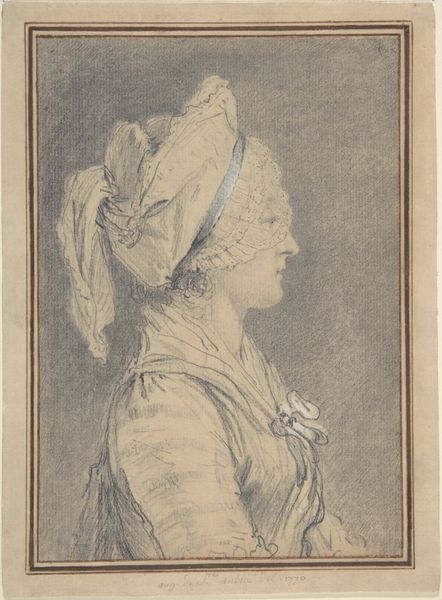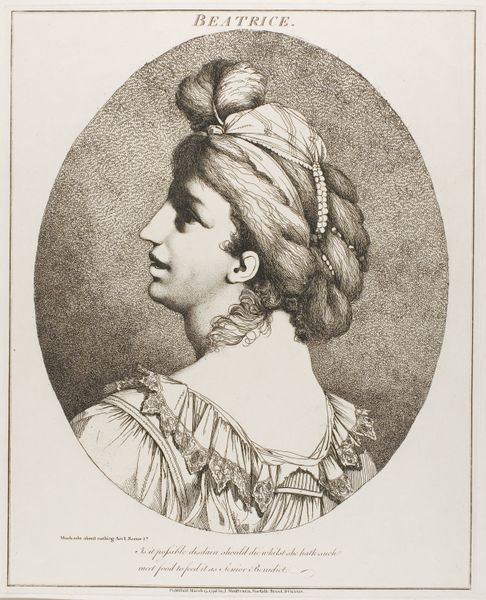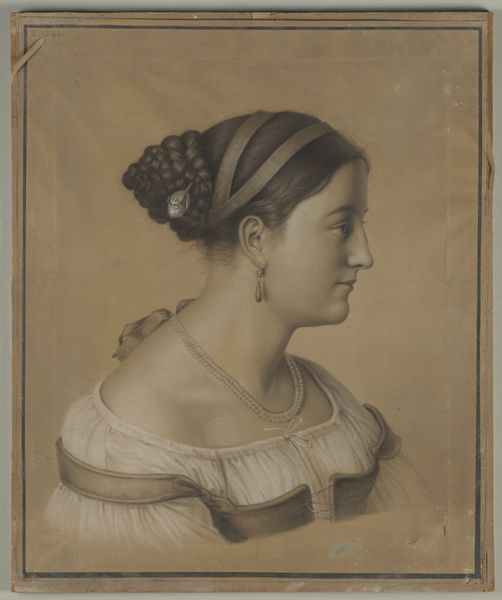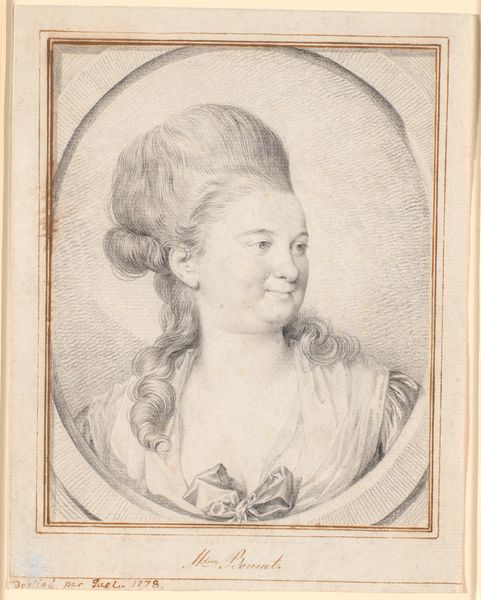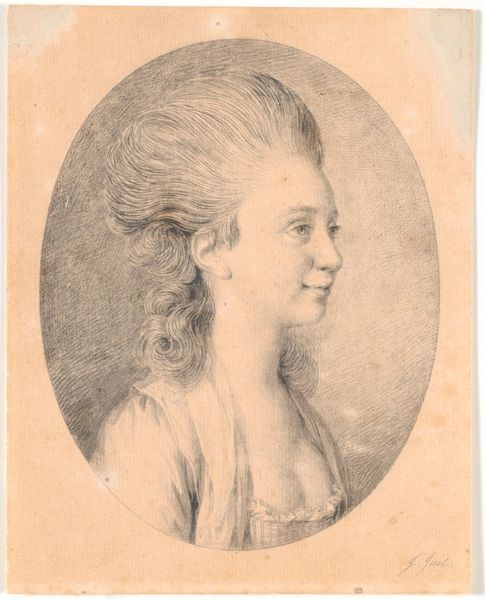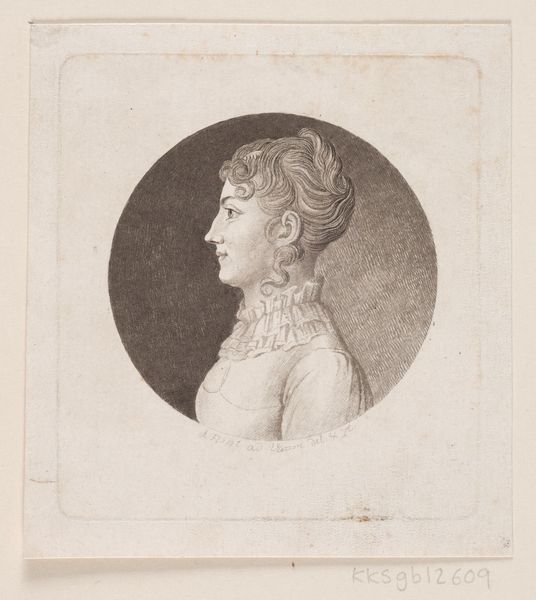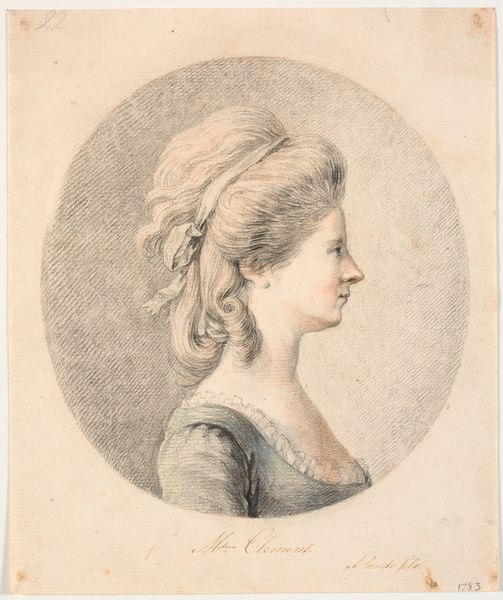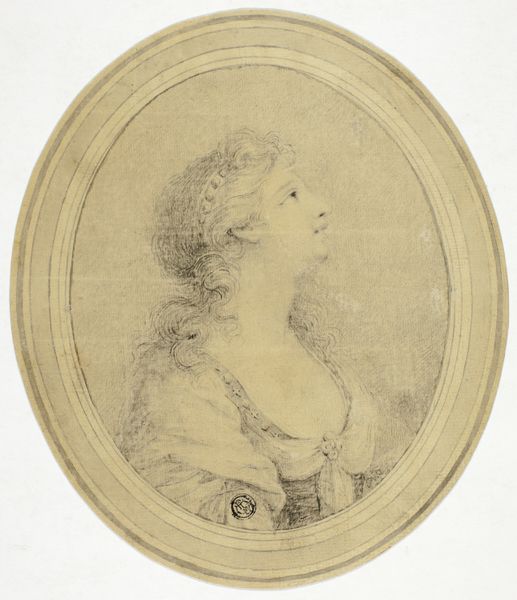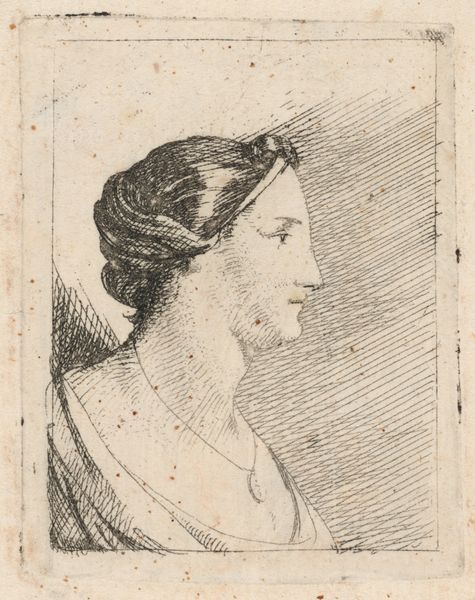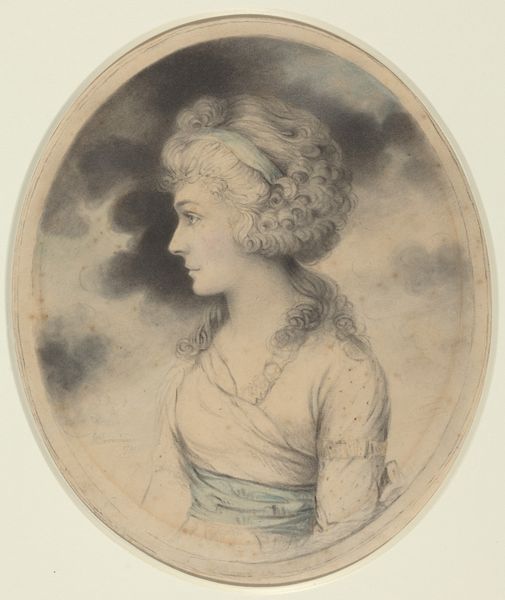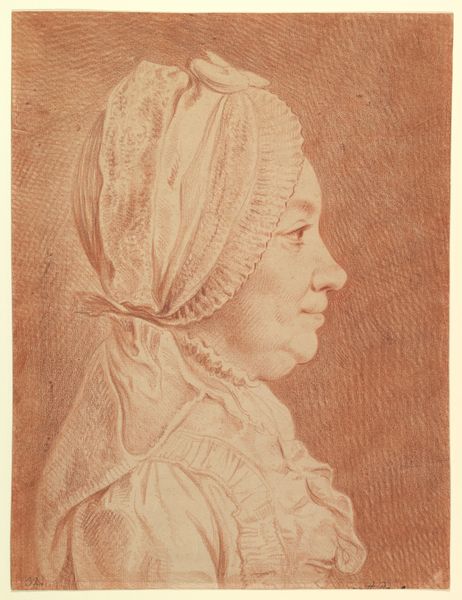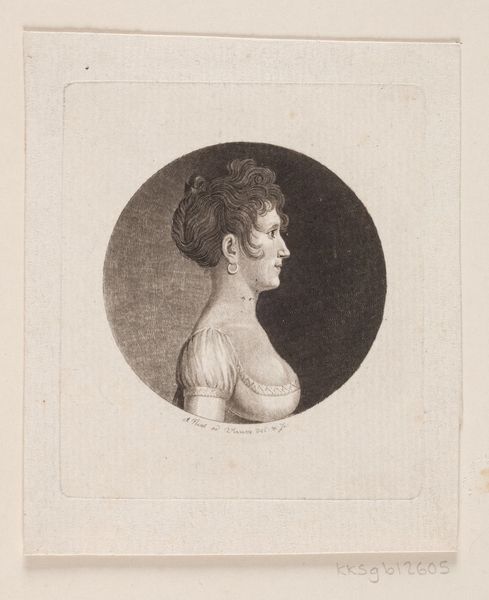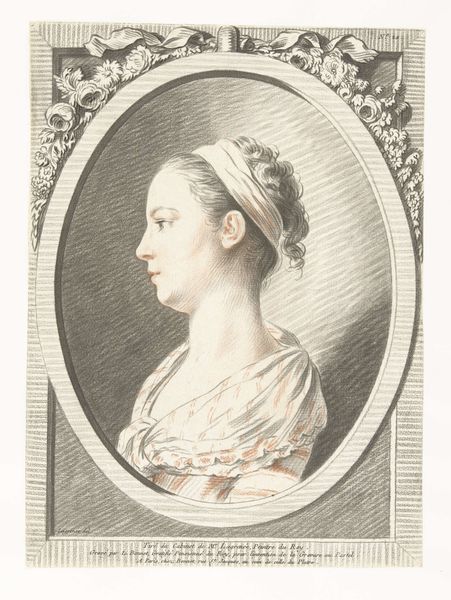
drawing, pencil
#
portrait
#
drawing
#
neoclacissism
#
self-portrait
#
pencil drawing
#
pencil
#
portrait drawing
Dimensions: sheet: 33 × 27 cm (13 × 10 5/8 in.)(oval)
Copyright: National Gallery of Art: CC0 1.0
Editor: Here we have John Hamilton Mortimer's "Beatrice," created around 1775 or 1776 using pencil. There’s something almost severe in her expression, despite the delicate details. What's your read on this portrait, considering its historical context? Curator: The severe expression you noticed offers an interesting entry point. This portrait, likely a self-portrait, arrives amidst rising neoclassicism. Note how it borrows visual ideas and presents an aesthetic associated with enlightenment ideals and growing public demand for dignified images of woman. Consider its role in constructing female identity within the art world of that era. What is being said about the power of images of women? Editor: So, it's less about personal expression and more about presenting a particular image, one sanctioned by the period? Curator: Precisely. The almost idealized profile, the restrained emotion...it suggests a conscious alignment with those classical values of rationality and virtue which were tied into moralizing. Editor: It makes you wonder, though, who this “Beatrice” really was. Is that the point or were such portraits always intended to be more representative than revelatory? Curator: The tension between representation and revelation is a key question with portraiture from any period, and the point about who the woman truly was brings us back to issues around the patronage and how social power is at play. The intent behind such portraits often resided in conveying status and adherence to accepted ideals rather than an individual’s "inner self”. I wonder if he felt a need to fit in, given what portraits were doing in this period? Editor: Fascinating. I definitely see it differently now, as an object created within definite historical pressures. Curator: Indeed, and viewing art this way, situating it within socio-political conditions, can change the way you see how identity itself can be, in a very real way, constructed by power.
Comments
No comments
Be the first to comment and join the conversation on the ultimate creative platform.
